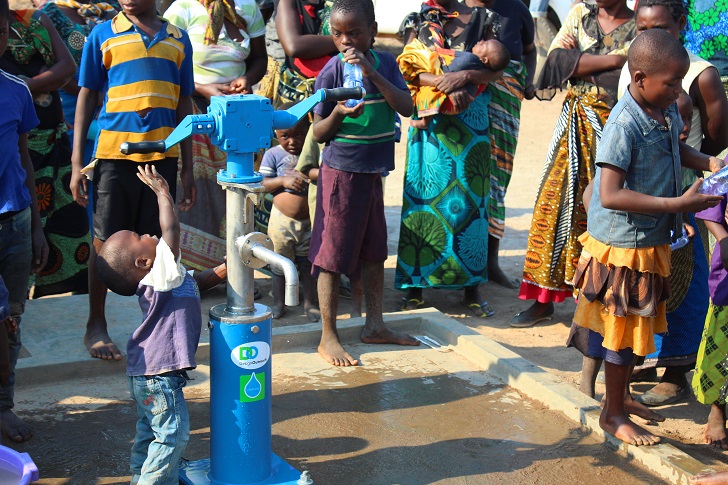
The pump industry can never be accused of being a glamourous one. Nevertheless individuals are often called on to perform vital and sometimes dramatic tasks in the midst of crisis and disaster – turning those participants into ‘unsung heroes’.
This is the second of four examples of some industry professionals who answered the call above and beyond their everyday workload — risking their own personal safety to help others in the midst of crisis, disaster, or other unforeseen events.
Clean water to Third World communities
Ten years ago, Design Outreach founders Greg Bixler and Abe Wright had an idea of using their engineering expertise to help provide clean water to people in developing countries who had little or no access to it. Bixler visited Central Asia in 2007 and after seeing the extreme poverty up close he realized he could help to alleviate some suffering in the world by using his engineering talents.
In 2010, he and Wright co-founded Design Outreach, whose flagship product, the LifePump, is helping to solve the global water crisis by bringing the many benefits of reliable water to people across Africa and Haiti. Bixler’s endeavors have led him to 18 countries, all while serving as CEO of Design Outreach, resident director for the Ohio State University (OSU) service-learning program, and as advisor for the OSU student chapter of Engineers Without Borders.
“There is a well-documented statistic that 90% of the world’s products are designed for only 10% of the world’s people,” Bixler said. “Engineers like myself spend all of our time designing things for just a sliver of the world’s population. That’s where humanitarian engineering comes in — to help fill that gap to design for people who are being overlooked.”
Design Outreach has now installed 49 LifePumps in six countries: Malawi, Zambia, Ethiopia, Mali, Kenya, and Haiti. The estimated number of lives impacted is about 17,150. The first LifePump was installed in Zolomondo, Malawi, in November 2013 and has been operating continuously with no downtime for more than four years.
No access to clean water
With more than 250 million people today without access to clean water, Bixler said he knows his company is not the only one devoted to solving the world’s water crisis. But with a reliable pump that is easily installed, easily operated, easily maintained, and can pump into extremely deep wells, the LifePump is certainly doing its part. Design Outreach is mostly volunteer-based with many engineers, marketers, accountants, lawyers, and church groups who want to use their skills to contribute to a greater cause.
“We have so much abundance in America,” said Bixler, a 37-year old father of three. “Its not that we should feel guilty of that abundance, but we can certainly use our wealth and abundance to help a lot of people in the world. It’s good for me to experience that. I’ve learned that draining my bank account is not going to solve the worlds problems, but inspiring other people to join me will make a huge difference. If we all do a little bit we can get rid of a lot of these problems in the world.”
Humanitarian engineering
Bixler remembers the first prototype he installed in the field in the Central African Republic in 2011. He also remembers serious lessons learned.
“It was a great learning experience, which in engineering terms means it didn’t work,” he said. “We did all of our due diligence, all of our research and testing in the United States on a shoestring budget, of course. We had two pumps we were going to install. Basically we learned that the psyche of humanitarian engineering is really a combination of using our first world of engineering, which is what we learn in college, and combining that with sociology and anthropology and understanding how people think. It’s important to design things for people that are appropriate for them, and that has the right value proposition. How to create appropriate technology has become a driving force for me. The technology must be appropriate for the people and the culture. This is very different than how we design things for the rest of the world.”
Bixler has seen first-hand how difficult it is to get water in some of these remote locations. The women must walk many miles and carry heavy containers of water, sometimes weighing more than 40 pounds. And the water is filthy.
Singing and dancing
“These are real people, not just statistics,” Bixler said. “When we show up to install a LifePump, the people of the village are singing and dancing because they are so appreciative. Because they now have water, there is less disease, more food, schools are being built, and gardens are planted. Their lives are completely changed.”
Still, Bixler said he doesn’t feel like a hero. “I think of a hero as someone who runs into a burning building or gets shot at trying to save a life,” he said. “I think it is an extreme blessing to be a part of this. It’s very fulfilling. In the beginning, I only wanted to work at a job where I was just doing engineering. But then I realized that I want to do things that directly help people. To be honest it is a very humbling experience. I’m not the one suffering. Of course there are risks in traveling and of course some places are a little more risky than others. People told us for decades they had been praying for water and then all of a sudden we show up and help them. This makes it all worthwhile.”






